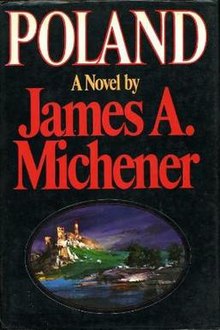Historical fiction is a literary genre in which the plot takes place in a setting related to the past events, but is fictional. Although the term is commonly used as a synonym for the historical romance, it can also be applied to other types of narrative, including theatre, opera, cinema, and television, as well as video games and graphic novels.

John III Sobieski was King of Poland and Grand Duke of Lithuania from 1674 until his death.
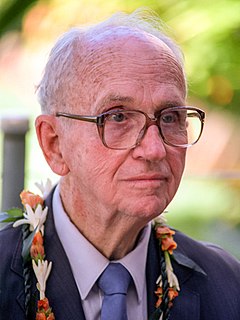
James Albert Michener was an American author. He wrote more than 40 books, most of which were long, fictional family sagas covering the lives of many generations in particular geographic locales and incorporating detailed history. Many of his works were bestsellers and were chosen by the Book of the Month Club; he was known for the meticulous research that went into his books.
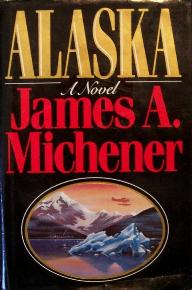
Alaska is a 1988 historical novel by James A. Michener. Like other Michener titles, Alaska spans a considerable amount of time, traced through the gradual interlinking of several families.

With Fire and Sword is a historical novel by the Polish author Henryk Sienkiewicz, published in 1884. It is the first volume of a series known to Poles as The Trilogy, followed by The Deluge and Fire in the Steppe. The novel has been adapted as a film several times, most recently in 1999.

Caribbean (1989) is an historical novel written by James A. Michener, which describes and explores the history of the Caribbean region from the pre-Columbian period of the native Arawak tribes until about 1990.
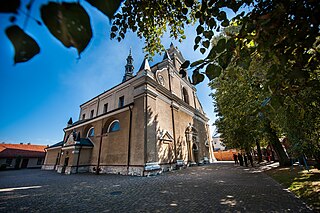
Radymno is a town in south-eastern Poland with 5,543 inhabitants (02.06.2009). It has been part of the Podkarpackie Voivodeship since its creation in 1999. Radymno was previously in the Przemyśl Voivodeship from 1975–1998.

The Drifters is a novel by Pulitzer Prize-winning author James A. Michener, published in 1971 by Random House. The novel follows six young characters from diverse backgrounds and various countries as their paths meet and they travel together through parts of Spain, Portugal, Morocco and Mozambique. The story is told from the perspective of the narrator, George Fairbanks, who is an investment analyst for the fictional company World Mutual Bank in Switzerland. Mr. Fairbanks is connected with nearly every character in some way, and they all seem to open up to him throughout the novel in one way or another.

Hawaii is a novel by James Michener published in 1959, the year that Hawaii became the 50th U.S. state. It has been translated into 32 languages.

The Lipka Tatars are a group of Tatars who originally settled in the Grand Duchy of Lithuania at the beginning of the 14th century. The first Tatar settlers tried to preserve their shamanistic religion and sought asylum amongst the non-Christian Lithuanians. Towards the end of the 14th century, another wave of Tatars – this time, Muslims, were invited into the Grand Duchy by Vytautas the Great. These Tatars first settled in Lithuania proper around Vilnius, Trakai, Hrodna and Kaunas and later spread to other parts of the Grand Duchy that later became part of Polish–Lithuanian Commonwealth. These areas comprise parts of present-day Lithuania, Belarus and Poland. From the very beginning of their settlement in Lithuania they were known as the Lipka Tatars. While maintaining their religion, they united their fate with that of the mainly Christian Polish–Lithuanian Commonwealth. From the Battle of Grunwald onwards the Lipka Tatar light cavalry regiments participated in every significant military campaign of Lithuania and Poland.
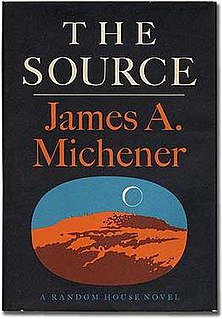
The Source is a historical novel by James A. Michener published in 1965. It is a survey of the history of the Jewish people and the land of Israel from pre-monotheistic days to the birth of the modern State of Israel. The Source uses, for its central device, a fictional tell (mound/hill) in northern Israel called "Makor". Prosaically, the name comes from a freshwater well just north of Makor, but symbolically it stands for much more, historically and spiritually.

Tales of the South Pacific is a Pulitzer Prize-winning collection of sequentially related short stories by James A. Michener about the Pacific campaign in World War II. The stories are based on observations and anecdotes he collected while stationed as a lieutenant commander in the US Navy at the Espiritu Santo Naval Base on the island of Espiritu Santo in the New Hebrides Islands.
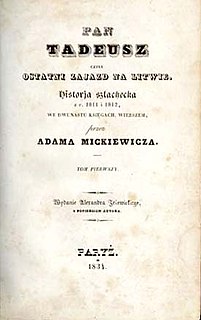
Pan Tadeusz is an epic poem by the Polish poet, writer, translator and philosopher Adam Mickiewicz. The book, written in Polish alexandrines, was first published on 28 June 1834 in Paris. It is deemed one of the last great epic poems in European literature.
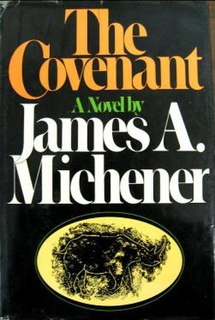
The Covenant is a historical novel by American author James A. Michener, published in 1980.

Chesapeake is a novel by James A. Michener, published by Random House in 1978. The story deals with several families living in the Chesapeake Bay area around Virginia and Maryland, from 1583 to 1978.
Yaakov Yosef Reinman is an American Orthodox rabbi and writer, historian, and scholar. His monographs and articles have appeared in many Jewish periodicals and his study of Talmudic contractual law is a text used in yeshivas throughout the world. In authoring his Ruach Ami series, he writes under the pen name Avner Gold.
The Trilogy (1884-1888) is a series of three novels written by the Polish author Henryk Sienkiewicz. The series follows dramatized versions of famous events in Polish history, weaving fact and fiction. It is considered great literary work on par with Adam Mickiewicz's Pan Tadeusz.
Bukowski, Bukovski, Bukovsky or Bukouski is a surname. It is composed of buk and the Slavic suffixes -ov and -ski. In some cases, the name may originate from a toponym, i.e. the name would have been given to or adopted by a person or family from a place named Buków, for example.

Kristina Sabaliauskaitė is an art historian, doctor honoris causa of Vilnius Academy of Arts and one of the most prominent contemporary Lithuanian writers. Born in Vilnius, she has been based in London since 2002. She worked as a foreign correspondent in London and columnist for Lithuania's biggest daily newspaper until 2010.

On the Field of Glory is a historical novel by the Polish author Henryk Sienkiewicz, published in 1906. The novel tells a story of a fictional young impoverished Polish nobleman and his love for a young aristocratic woman. The story is set during the reign of King John III Sobieski up to the eve of the Battle of Vienna. It was published in the United Kingdom by John Lane, the Bodley Head, London, under the title The Field of Glory, 1906. The Polish original was published: nakład i druk Tow. Akc. S. Orgelbranda Synów, Warszawa, 1906.
